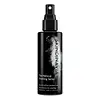What's inside
What's inside
 Key Ingredients
Key Ingredients

No key ingredients
 Benefits
Benefits

 Concerns
Concerns

 Ingredients Side-by-side
Ingredients Side-by-side

Water
Skin ConditioningAlcohol Denat.
AntimicrobialPvp
Emulsion StabilisingPropanediol
SolventPPG-3 Benzyl Ether Myristate
EmollientDimethicone PEG/PPG-12/4 Phosphate
CleansingGlycereth-5 Lactate
EmollientPolyhydroxystearic Acid
EmulsifyingChlorphenesin
AntimicrobialEthylhexyl Isononanoate
EmollientIsononyl Isononanoate
EmollientPoloxamer 124
EmulsifyingSodium Citrate
BufferingSodium Cocamidopropyl Pg-Dimonium Chloride Phosphate
CleansingCaprylhydroxamic Acid
Aloe Barbadensis Leaf
MaskingDipotassium Glycyrrhizate
HumectantPPG-26-Buteth-26
Skin ConditioningPEG-40 Hydrogenated Castor Oil
EmulsifyingParfum
MaskingWater, Alcohol Denat., Pvp, Propanediol, PPG-3 Benzyl Ether Myristate, Dimethicone PEG/PPG-12/4 Phosphate, Glycereth-5 Lactate, Polyhydroxystearic Acid, Chlorphenesin, Ethylhexyl Isononanoate, Isononyl Isononanoate, Poloxamer 124, Sodium Citrate, Sodium Cocamidopropyl Pg-Dimonium Chloride Phosphate, Caprylhydroxamic Acid, Aloe Barbadensis Leaf, Dipotassium Glycyrrhizate, PPG-26-Buteth-26, PEG-40 Hydrogenated Castor Oil, Parfum
Water
Skin ConditioningSd Alcohol 39
AstringentPolyhydroxystearic Acid
EmulsifyingIsononyl Isononanoate
EmollientEthylhexyl Isononanoate
EmollientSodium Cocamidopropyl Pg-Dimonium Chloride Phosphate
CleansingMethyl Perfluorobutyl Ether
SolventMethyl Perfluoroisobutyl Ether
SolventPvp
Emulsion StabilisingPhenoxyethanol
PreservativeCaprylyl Glycol
EmollientGluconolactone
Skin ConditioningSodium Benzoate
MaskingDimethicone PEG-7 Phosphate
CleansingPPG-3 Benzyl Ether Myristate
EmollientMethyl Methacrylate Crosspolymer
Glycereth-5 Lactate
EmollientParfum
Masking5-Isopropyl-2-Methylanisole
PerfumingAloe Barbadensis Leaf Juice
Skin ConditioningSodium Hydroxide
BufferingWater, Sd Alcohol 39, Polyhydroxystearic Acid, Isononyl Isononanoate, Ethylhexyl Isononanoate, Sodium Cocamidopropyl Pg-Dimonium Chloride Phosphate, Methyl Perfluorobutyl Ether, Methyl Perfluoroisobutyl Ether, Pvp, Phenoxyethanol, Caprylyl Glycol, Gluconolactone, Sodium Benzoate, Dimethicone PEG-7 Phosphate, PPG-3 Benzyl Ether Myristate, Methyl Methacrylate Crosspolymer, Glycereth-5 Lactate, Parfum, 5-Isopropyl-2-Methylanisole, Aloe Barbadensis Leaf Juice, Sodium Hydroxide
Ingredients Explained
These ingredients are found in both products.
Ingredients higher up in an ingredient list are typically present in a larger amount.
We don't have a description for Ethylhexyl Isononanoate yet.
We don't have a description for Glycereth-5 Lactate yet.
Isononyl Isononanoate is a synthetic skin-conditioner and texture enhancer. It is created from nonanoic acid, a fatty acid found in cocoa and lavender oil.
As an emollient, Isononyl Isononanoate helps keep your skin soft and smooth. This is because emollients create a barrier on the skin to trap moisture in.
Isononyl Isononanoate helps give products a velvet feel and improves spreadability.
Learn more about Isononyl IsononanoateParfum is a catch-all term for an ingredient or more that is used to give a scent to products.
Also called "fragrance", this ingredient can be a blend of hundreds of chemicals or plant oils. This means every product with "fragrance" or "parfum" in the ingredients list is a different mixture.
For instance, Habanolide is a proprietary trade name for a specific aroma chemical. When used as a fragrance ingredient in cosmetics, most aroma chemicals fall under the broad labeling category of “FRAGRANCE” or “PARFUM” according to EU and US regulations.
The term 'parfum' or 'fragrance' is not regulated in many countries. In many cases, it is up to the brand to define this term.
For instance, many brands choose to label themselves as "fragrance-free" because they are not using synthetic fragrances. However, their products may still contain ingredients such as essential oils that are considered a fragrance by INCI standards.
One example is Calendula flower extract. Calendula is an essential oil that still imparts a scent or 'fragrance'.
Depending on the blend, the ingredients in the mixture can cause allergies and sensitivities on the skin. Some ingredients that are known EU allergens include linalool and citronellol.
Parfum can also be used to mask or cover an unpleasant scent.
The bottom line is: not all fragrances/parfum/ingredients are created equally. If you are worried about fragrances, we recommend taking a closer look at an ingredient. And of course, we always recommend speaking with a professional.
Learn more about ParfumPolyhydroxystearic Acid is a soft wax made from castor oil.
It is is a texture thickener, emulsifier, and film-former. Emulsifiers prevent ingredients from separating, such as oils and waters.
Polyhydroxystearic Acid may not be fungal acne safe.
Learn more about Polyhydroxystearic AcidWe don't have a description for PPG-3 Benzyl Ether Myristate yet.
Pvp is a water-soluble synthetic polymer and common hairstyling ingredient. It is a film-forming ingredient and used to "hold" specific shapes of hair.
Pvp is less effective in high-humidity. It tends to draw moisture, but this moisture dismantles the structure and "hold".
We don't have a description for Sodium Cocamidopropyl Pg-Dimonium Chloride Phosphate yet.
Water. It's the most common cosmetic ingredient of all. You'll usually see it at the top of ingredient lists, meaning that it makes up the largest part of the product.
So why is it so popular? Water most often acts as a solvent - this means that it helps dissolve other ingredients into the formulation.
You'll also recognize water as that liquid we all need to stay alive. If you see this, drink a glass of water. Stay hydrated!
Learn more about Water